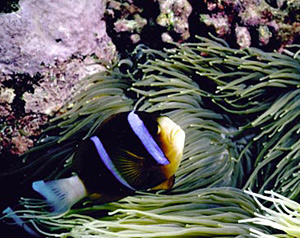 |
 |
 |
 Editorials | Environmental | June 2006 Editorials | Environmental | June 2006  
A Move to Save Coral Reefs
 NYTimes NYTimes


| | Coral reefs cover a very small part of the ocean, less than 1 percent. But they contribute mightily to the sustenance of ecosystems needed in the oceans, attracting and supporting diverse sea life. |
Anyone who has given thought to the pitifully fragile state of the oceans' coral reefs should have been heartened by the recent classification of two kinds of coral as threatened under the Endangered Species Act. The inclusion of the elkhorn and staghorn, two species of Caribbean coral, was a welcome first for the list, prompted by a task force on coral reefs established by President Bill Clinton and continued by the Bush administration.

The prominence given to the two spiky formations may help to educate the public about creatures that many people do not understand. Coral colonies consist of billions of tiny organisms and can take centuries to grow just a few feet. But now whole stretches are being killed off at alarming rates around the world by bad human behavior. That includes the dumping of untreated sewage or industrial runoff into the ocean. Coral that is constantly broken by irresponsible snorkelers, divers, poachers or fishing boats takes decades to recover, if it ever can. Human dependency on fossil fuels contributes to global warming and rising ocean temperatures.

Coral reefs, wildly colored when healthy, can go chalk white when they are sick and dying, usually the result of stress from sustained higher temperatures in the sea or exposure to ultraviolet rays of the sun. Last fall, record amounts of bleaching occurred in the Caribbean, killing at least 8 percent of the elkhorn coral colonies off the Virgin Islands.

Coral reefs cover a very small part of the ocean, less than 1 percent. But they contribute mightily to the sustenance of ecosystems needed in the oceans, attracting and supporting diverse sea life. When reef systems die — as happened off the Seychelles islands, where sea temperatures were elevated for several years — varieties of fish become extinct. Coral reefs also provide natural barriers to severe weather, like storm surges from hurricanes. And they process and recycle carbon dioxide from the atmosphere.

The official recognition that coral deserves to be protected is a step in the right direction and may buy some time. But more action is needed, and quickly, if the underwater wonders that support so much life are to survive intact. | 
 | |
 |



